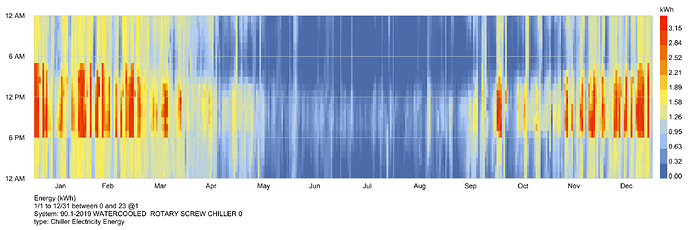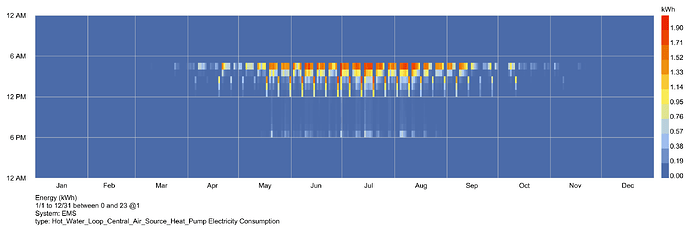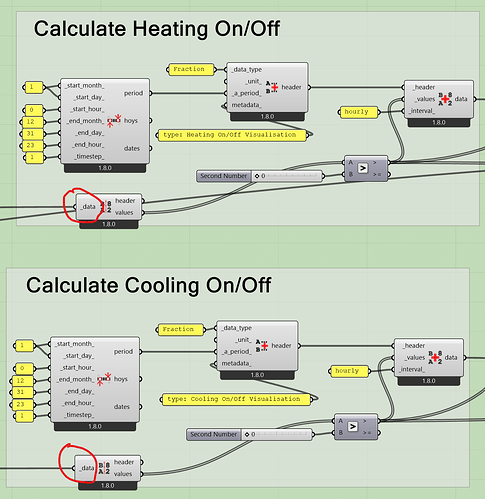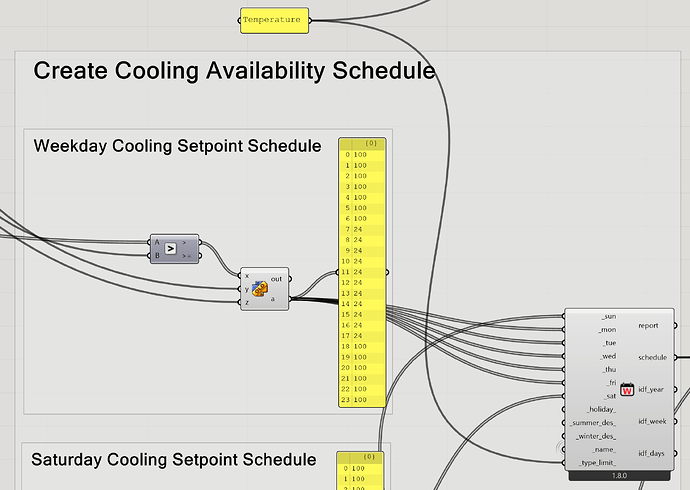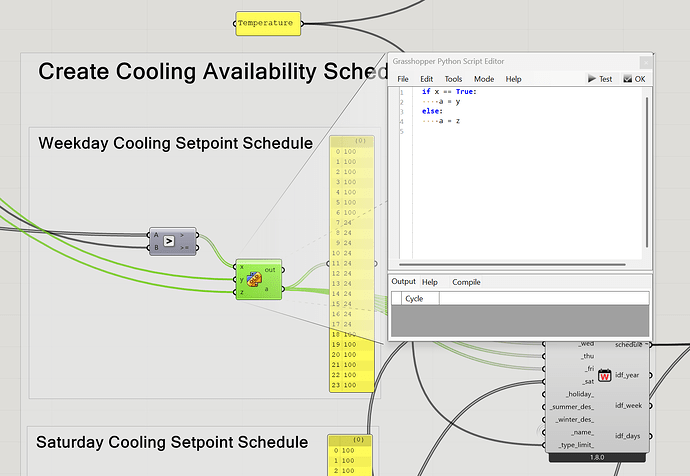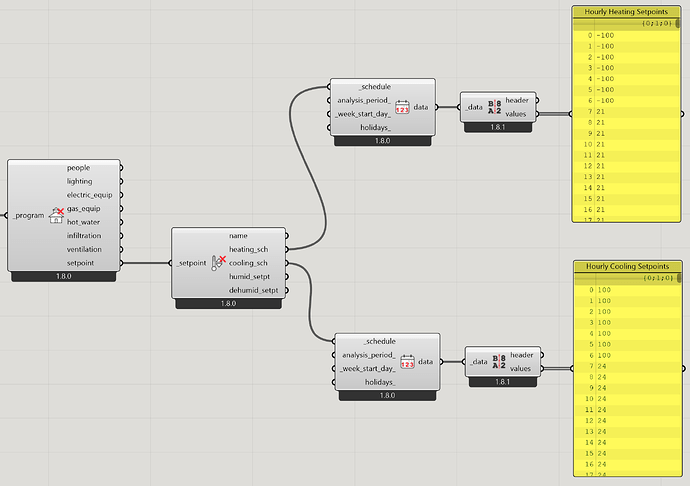Hi Ladybug Community,
I have created a programme for an office building in Sydney, Australia, which uses schedules to turn off the HVAC system overnight. This is done for the mechanical ventilation, heating, and cooling systems. The intention was to do what is commonly recommended and set the cooling set point to a very high number when you don’t want the cooling system to run (e.g. 100 degrees Celsius) and set the heating setpoint to a very low number when you don’t want the heating system to run (e.g. -100 degrees Celsius).
When running the model with the programme and breaking down hourly data for the results, we can see that the cooling system is running overnight, while the heating system does not.
Cooling system:
Heating system:
Office buildings in Sydney are cooling dominated, but I need to shut off the cooling overnight. I built the following graphs to show which hours of the year the cooling and heating systems are running (non-zero hourly heating/cooling energy use).
Cooling system on/off visualisation:
Heating system on/off visualisation:
The on/off visualisation graphs are built using the following definitions, where the circled data coming in are the cooling and heating energy outputs from the HB Read Room Energy Result component.
We can see that the heating system only runs between 7am-6pm, and mostly during winter, exactly as we would expect. The cooling system on the other hand, is pretty much running constantly, including overnight, except for winter nights.
The heating and cooling schedules have been built based on the HVAC availability schedule. If the HVAC availability for that hour is 0, then make the heating set point -100 and the cooling set point 100. If the HVAC availability for that hour is 1, then make the heating set point 21, and the cooling set point 24. I’ve done it this way so that I can adjust the two panels containing the heating and cooling setpoints, and the numbers in the heating and cooling schedules update accordingly.
Where A are the 24 HVAC true/false values from the HVAC availability schedule, B = 0, and y is the cooling setpoint (24), and z = 100 (very high temperature that will never be exceeded).
If I deconstruct the programme and setpoints, convert the setpoint schedules to data, and then deconstruct the data, we can see that the numbers in the data are exactly as we would expect.
For the first hours of the year, the heating setpoint is -100 and the cooling setpoint is 100. It isn’t hotter than 100 degrees Celsius overnight, so I’m a bit lost as to why the building is cooling overnight?
Please let me know if you have any ideas, maybe I have made a mistake or improper assumption somewhere? Please let me know if you need any more information to get to the bottom of the issue.
Cheers,
Anthony
